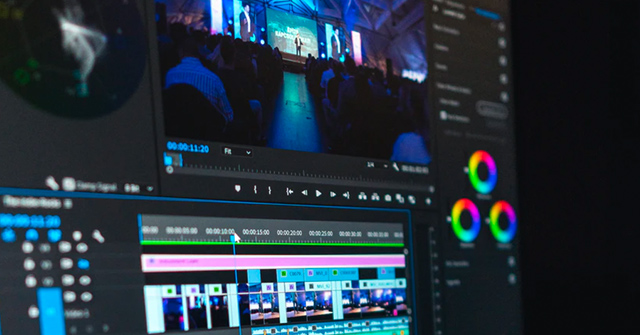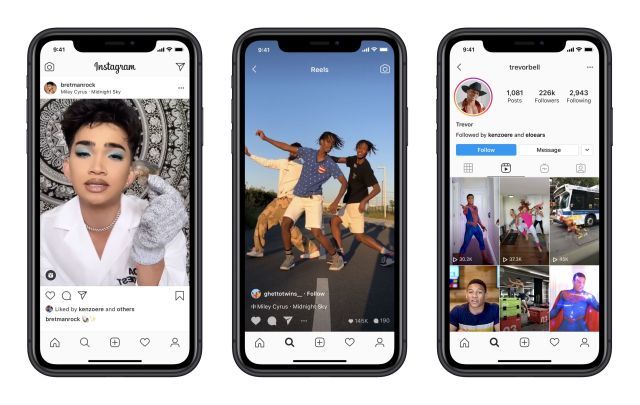The present-day observable universe is probably bigger than you think. The “observable” part refers to the region within our particle horizon. We define this as being the farthest we could possibly see, given the limitations of the speed of light and the age of the universe. Since light takes time to travel, and more distant objects are, from our perspective, farther in the past, there has to be a distance corresponding to the beginning of time itself. A distance at which, if a light beam started there at the first moment, it would take the entire age of the universe to reach us. This defines the particle horizon, and it’s the farthest out we can observe anything at all, even in principle. Knowing that the universe is about 13.8 billion years old, logic would tell you that the particle horizon must be a sphere of radius 13.8 billion light-years. But that’s assuming a static universe. In actual fact, since the universe has been expanding all that time, something just close enough to send its light to us 13.8 billion years ago is now much farther away—approximately 45 billion light-years. So we can define the observable universe to be a sphere of about 45 billion light-years in radius, centered on us.
The closest we can get to seeing that “edge” is the cosmic microwave background, whose light comes from almost as far as the particle horizon. But a bit closer to us, we can also see ancient galaxies that are now more than 30 billion light-years away. The light we see from those galaxies started traveling through the universe long before they got to such incredible distances, though. If not, we wouldn’t be able to see them at all, since the light coming from them now can’t ever reach us.
It turns out that in a uniformly expanding universe, where the more distant things are receding more quickly, it is inevitable that there is a distance beyond which the apparent recession speed is faster than the speed of light, so light can’t catch up.
“Wait!” you might be saying. “Nothing can travel faster than light!” This is a fair point, but it doesn’t actually lead to a contradiction. While nothing can travel faster than light through space, there’s no rule that limits how quickly things can happen to find themselves farther apart because they are sitting still in a space that’s getting bigger between them.
The distance at which galaxies are currently moving away from us faster than light is surprisingly close, given how far we can actually see. We call it the Hubble radius, and it’s around 14 billion light-years from here. I mentioned in Chapter 3 that we can label the distance to objects by their redshift factors—the amount that their light is shifted toward the red (low frequency/long wavelength) part of the spectrum due to the expansion of the universe. An object at the Hubble radius would have a redshift of about 1.5, meaning the light wave, and the universe itself, has stretched out to two and a half times its original length since the light was emitted. But even that utterly unimaginable distance is, in cosmological terms, just around the corner. We’ve seen individual supernovae out to redshifts of almost 4. The most distant galaxies we’ve seen have been at redshift values of about 11, and the cosmic microwave background is at a redshift of around 1,100.
So how do we see so many things that are so far away that they’re receding from us at more than the speed of light, and, in fact, always have been? If something is moving away at more than the speed of light, a light beam emitted from it is getting farther away from us, not closer. The trick is that the light we’re picking up left the source long ago, when the universe was smaller and the expansion was actually slowing. So a light beam that started out being carried by the expansion of space away from us (even though it was emitted in our direction) eventually was able to “catch up” as the expansion slowed and it reached a part of the universe that was close enough for the recession speed to be less than the speed of light. It entered our Hubble radius from the outside.
Imagine you’re standing in the middle of a very long treadmill that’s going faster than you can run. Even running at your top speed, you’re going to be dropping back. But if you don’t get dragged back too far, and if the treadmill slows down enough, you can eventually make up the lost ground and start to move forward before falling off the back end. So if you’re in a universe whose expansion is slowing down, you’ll be able to see more and more distant objects as time goes on, as the light from distant objects catches up with the expansion. The “safe zone” in which the expansion speed is less than the speed of light, the Hubble radius, grows over time and envelops objects that were previously outside it. Our horizons, so to speak, expand.
Dark energy ruins everything, though. Because of dark energy, the expansion isn’t slowing anymore—in fact, it has been speeding up for about the last five billion years. And while the Hubble radius is still technically growing in physical size, it’s growing so slowly that the expansion is pulling previously visible objects outside it. We can see extremely distant objects whose light crossed into our Hubble radius before the acceleration began, but anything whose light isn’t in the safe zone now will remain invisible forever. (More on that later.)
Even without the dark energy complication, an expanding universe can be a hard thing to wrap your head around.
The fact that the universe is expanding means it was smaller in the past: fine.
The fact that it was smaller in the past means that something that is far away now was closer in the past: okay. That, in turn, means that there’s a very distant galaxy we can currently see that was, billions of years ago, kind of nearby: right.
And long ago that galaxy shot out a beam of light that was originally moving directly away from us despite being pointed in our direction, but which from our perspective then sort of stopped and turned around and has just now arrived: sure, from a certain point of view, that might make sense.
BUT IT GETS EVEN STRANGER.
I’m sorry for shouting. I really am. But I’m not going to sugarcoat this. The universe is frickin’ weird and this whole Hubble-radius-observable-universe thing is a big part of that and it makes deeply bizarre things happen. And now I’m going to tell you one of the most mind-blowing bits of weirdness I know about cosmology. You know how when something is far away, it looks smaller? This is a totally normal thing. The farther away something is, the smaller it looks. People look tiny from airplanes. Distant buildings can be covered with your thumb. Everyone knows that.
Except out there in the universe? Not so much.
For a while, sure, the more distant things are smaller. The Sun and the Moon look the same size to us because even though the Sun is vastly bigger, it’s also a heck of a lot farther away. And for many billions of light-years, the more distant the galaxy is, the smaller it looks. As you would expect. But somewhere in the vicinity of the Hubble radius, that relationship reverses. Beyond that distance, the farther away something is, the larger it appears! This is super convenient for us astronomers, of course, as it allows us to see structure and details in galaxies that are extremely distant from us, and that in a sensible universe would look like infinitesimal points. But if we think about it too much, it still seems like an utterly unreasonable way for geometry to work.
The reason for this reversal is related to the reason we can see things that are currently moving away from us faster than light. In the past, when the light was emitted, they were closer. So close, in fact, that they covered more of the sky. Even though they’re much farther away now, the “snapshot” they’ve sent us has been traveling all that time, and is just reaching us now, showing us the ghostly image of a much closer thing. And the farther back in time you go, the smaller the universe was. So beyond a certain point, the balance between “the universe was smaller in the past” and “light takes a certain amount of time to get here” is such that a galaxy that is more distant than another galaxy now might have actually been closer when its light was emitted.
The reason for this reversal is related to the reason we can see things that are currently moving away from us faster than light. In the past, when the light was emitted, they were closer. So close, in fact, that they covered more of the sky. Even though they’re much farther away now, the “snapshot” they’ve sent us has been traveling all that time, and is just reaching us now, showing us the ghostly image of a much closer thing. And the farther back in time you go, the smaller the universe was. So beyond a certain point, the balance between “the universe was smaller in the past” and “light takes a certain amount of time to get here” is such that a galaxy that is more distant than another galaxy now might have actually been closer when its light was emitted.
Look, I warned you it would be weird.
Anyway, if this is all deeply confusing and mind-boggling, that’s totally okay and normal. Maybe try drawing some sketches on napkins, and then stretch out the napkins in every direction while on some kind of infinite treadmill running at an extreme speed over the course of billions of years, and hopefully it’ll make sense then. Meanwhile, we should get back to what this all means for the future of existence. Because it really isn’t good.
















 The UX of Lego interface panelsGeorge Cave, designbycave.co.ukWhether it’s a spaceship, a cash register or a car instrument cluster, Lego interface panels play a relatively small role in the grand scheme of most builds. They offer finer details for a…
The UX of Lego interface panelsGeorge Cave, designbycave.co.ukWhether it’s a spaceship, a cash register or a car instrument cluster, Lego interface panels play a relatively small role in the grand scheme of most builds. They offer finer details for a…